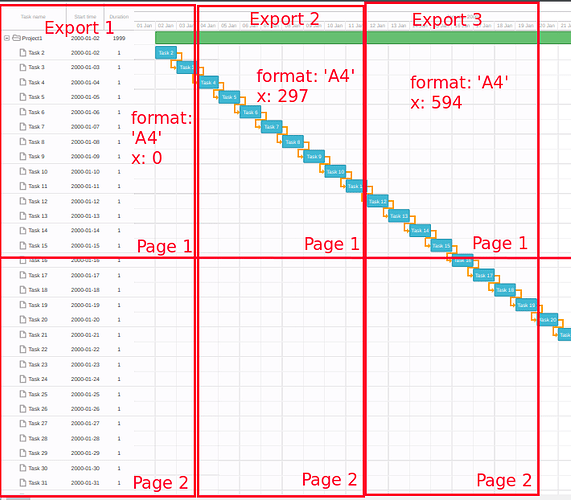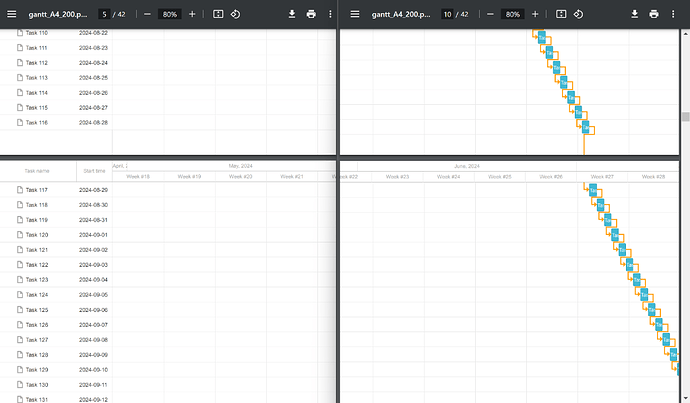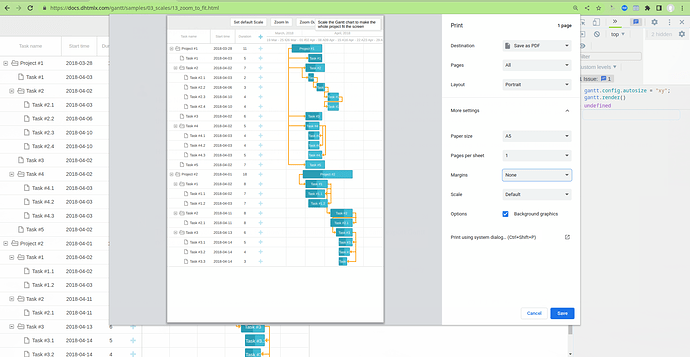Hello,
i want to do :
header / footer / timescale (up + down) on each page
In the current version of the export module, there is no built-in way to display a custom header and footer on each page. You need to implement a custom solution for that. In the future, the dev team will add that feature, but I cannot give you any ETA.
Right now, it works this way:
As the article in the blog says, you need to implement a custom solution to not tear the tasks between the pages and to show the header on each page. The easiest way to do that is to add empty task rows. You can use that approach to display the footer as well. But you need to implement a custom solution to calculate the sizes of empty task rows for each page.
To show custom elements on each page, you need to add the position: fixed style rule.
Here is an example:
https://snippet.dhtmlx.com/qjkh2x55
And this is how it works in combination with the implementation of creating empty task rows:
https://snippet.dhtmlx.com/bahly0gq
i want to do :
link between activities cross pages
Gantt is exported the same way as you would see in the browser (except headers). So, if there are some parts of Gantt that don’t have the tasks, you will also have that in the exported file.
If there is a link between tasks, it will be displayed across the pages.
If you want to hide some dates that don’t have any tasks, you need to do that before exporting the data. For that, you can use the ignore_time function:
https://docs.dhtmlx.com/gantt/api__gantt_ignore_time_other.html
Here is an example of how it can be implemented:
And this is how it works with the export function:
https://snippet.dhtmlx.com/5qb6gn06


